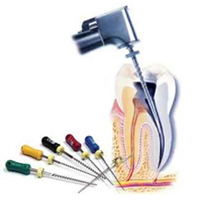Dental Pulp

The pulp is a soft tissue that contains the nerves, arteries, veins, and lymph vessels of a tooth. It lies within the dentin, the bone-like tissue that supports the enamel. Within the dentin, the pulp extends from the pulp chamber in the crown (the portion of the tooth visible above the gums) down to the tip of the root by way of the root canal. All teeth have only one pulp chamber, but teeth with more than one root will have more than one canal.
How does the pulp become diseased?
The following are the most common causes of pulp damage:
- Deep decay
- Repeated dental procedures
- Very large fillings
- Severe gum disease
- Loose fillings
- Trauma
- Physical blow to a tooth
- Continual clenching or grinding
Regardless of the cause, the tooth pulp becomes irritated and infected.
Sometimes the deterioration of the pulp happens so gradually that little pain is felt. Either way, eventually the bacteria can destroy the pulp. As this happens, the bone surrounding the tooth may become infected and abscessed which may lead to the destruction of the bone surrounding the tooth.
What happens to the damaged pulp?
When the pulp is diseased or injured and unable to repair itself, the pulp dies. The most common cause of pulp death is a fracture or a deep cavity that exposes the pulp to saliva. Left untreated, the infection eventually causes the pulp to die. Pus builds up at the root tip, forming an abscess that can destroy the supporting bone that surrounds the tooth.
Why does the pulp need to be removed?
If the damaged or diseased pulp is not removed, the tooth and surrounding tissues become infected. Pain and swelling may accompany the infection. Even in the absence of pain, certain by-products of a diseased pulp can injure the bone that anchors your tooth in the jaw. Without endodontic treatment, your tooth will eventually have to be removed.



